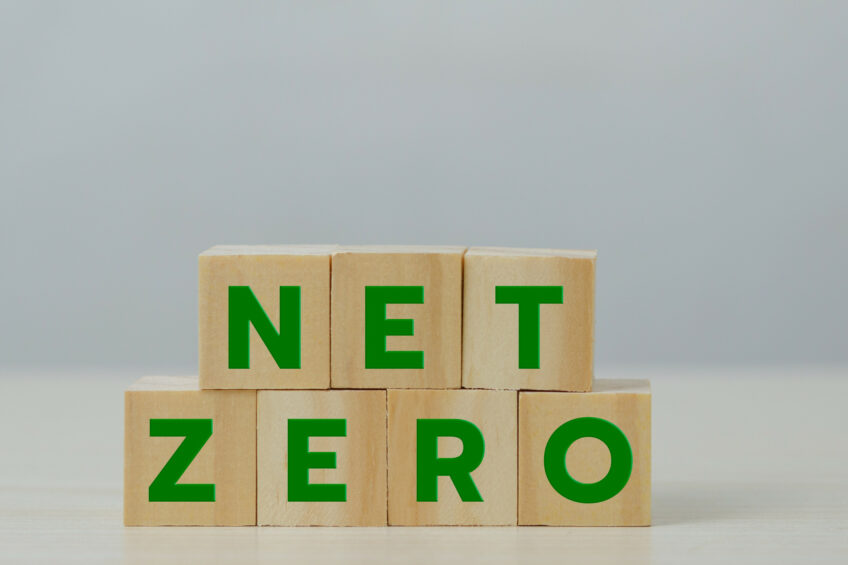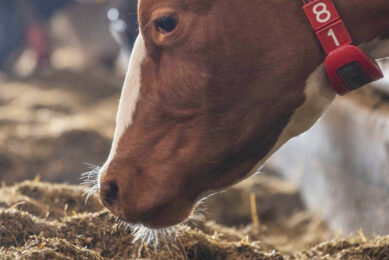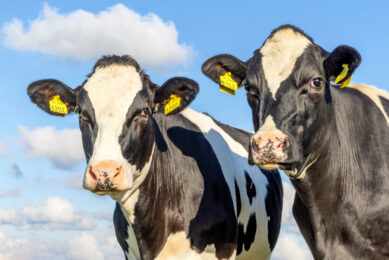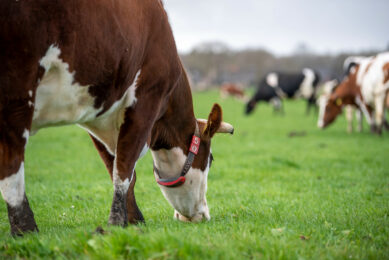Reducing on-farm dairy emissions the easy way

Moves to become net zero through improved feed digestion from more efficient use of feed, the use of co-products, improved genetics and by focusing on waste streams are in the pipeline for one of the UK’s most influential dairy herds.
The award-winning commercial Grosvenor Farms Estate in Cheshire produces more than 32 million litres of milk a year – enough for 430,000 people every day – and grows 2,200 ha of forage and grains for food production and animal feed.
For some time, its ambition has been to be the UK’s leading producer of sustainable milk and cereal grains through farming in a way that supports the environment and builds on significant carbon reductions already achieved.
Net zero
Visitors to the Royal Association of British Dairy Farmers ‘Down to Earth’ event heard dairy manager David Craven and arable manager Charlie Steer talk about how they hoped the farm would be net zero within 6 years.
They already have one of the lowest carbon emissions within the Tesco Sustainable Dairy Group (TSDG) milk pool at 939kg of CO2e/litre, reducing emissions by more than 40% over the last decade while improving profits. This compares with the average across the TSDG pool of 323 farms of 1,158kg of CO2e/litre of milk.
Steer said it was vital that farmers knew their carbon footprint to move forward: “You need to understand your position and where you can get to, and then you can set out a plan to do so. Without that, if you haven’t got a starting point, you don’t know where you will go,” he said.
Professor John Gilliland, Agriculture and Horticulture Development Board environment adviser reinforced Steer’s message by telling producers to start considering ways of reducing emissions and recording their journeys.
“I would encourage all farmers not to put their heads in the sand. Know your numbers, go for the win-wins and engage the win-wins. Grosvenor had done exceptionally well; they’ve leveraged the win-wins to show that as they bring their footprint down, their profit has gone up,” he said.
Easy wins
On-farm data was vital for telling the story with transparency and integrity and among the easy wins to reduce emissions is using the new feed ingredient, Bovaer, which is used at Grosvenor, to reduce enteric methane.
The product is being fed at 60 parts per million (ppm) in the total diet, equating to 1.5kg fed per cow per day. Consultant Adrian Packington said: “If we are goring to move towards low-carbon dairy, we really have got to address enteric methane. At COP 26 in Glasgow, 155 countries signed up to the global methane pledge to reduce methane by 30% by 2030. So reducing methane by 10% is not enough.”
Initial data at Grosvenor shows that feeding Bovaer has reduced methane by 31% of 1.3 tonnes of CO2e per cow per year.
Dr Anna Sutcliffe, ruminant technical manager at AB Dairy, told the 1,300 visitors of how dietary changes can reduce emissions, adding that swapping soya for protected rape was a good start.
Primary protein source
“At Grosvenor, they use rape as their primary protein source. NovaPro, a protected rapeseed product, has a bypass protein content similar to soya so that you can replace that quality protein.” She added that co-products such as Brewers Grain draft and Trafford Gold have very low emissions values as the carbon has followed the head product.
Breeding is also contributing to emissions reductions, with genetic selection and the use of genomics making a difference to the farm’s carbon footprint. Speakers from Cogent explained how Eco Feed, an index that measures fed conversion, can reduce feed intake and methane production by 15% for every 5-point increase in the Eco Feed score while maintain production.
Grosvenor Farms has also focussed on de-risking their business by optimising the higher-yielding land areas for food production and less productive areas that were resource-hungry and financially unsustainable for habitat protection and enhancement with 12% of their land now in some biodiversity scheme.
Edward Earnshaw from Just Farm explained that money can be made by identifying unproductive land for Environment Land Management (ELMS) payments.
“For those who are prepared to look at it, these payments can add up to quite a significant part of the gross margin, let alone net margin, and that is where I’d encourage people to start with and focus on what works, what fits and what pays.
“Unproductive flower-rich grass areas are one of the best ones because they are hugely practical to plant in an area that doesn’t perform well. It’s worth almost £330 an acre and that comes back to making every acre pay, knowing which parts of the farm produce and where they can’t then get paid for doing something else in that area that fits,” he added.
Robert Craig, RABDF chairman, said reducing on-farm emissions doesn’t have to be about making huge investments: “We have seen from the event and Grosvenor Farms that the fine-tuning can make a big difference over time, not only in emission reductions but also in farm profitability. Grosvenor Farms is a clear example of how a drive to reduce emissions has positively impacted productivity and output,” he added.
Join 13,000+ subscribers
Subscribe to our newsletter to stay updated about all the need-to-know content in the dairy sector, two times a week.










